A  Guide To Calculus
Guide To Calculus
1. Intuition-First Learning
| Concept | Key Analogy / Takeaway |
|---|---|
| Learning Strategy: Blurry, then refine |
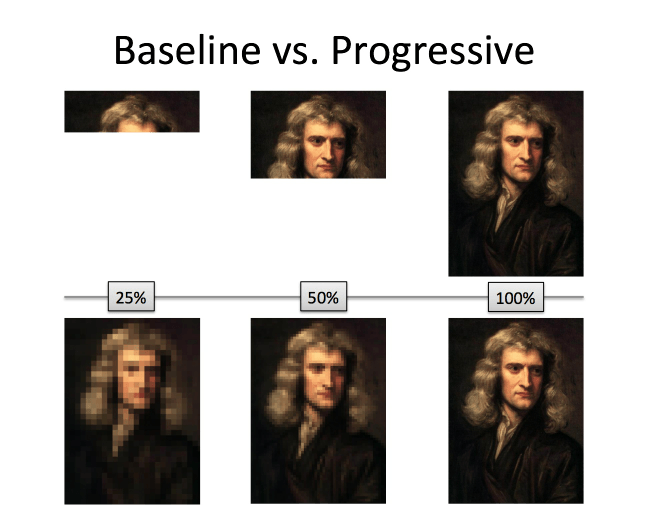 |
| Music Analogy | In music: Appreciation (sounds good!), description (hum it), symbols (sheet music), performance (play it) In math: Appreciation (aha!), description (English), symbols (math), performance (calculate) |
| Appreciation vs. Performance | We can enjoy listening to music even if we can't play it. We can think with calculus even if we can't (yet) compute with calculus. |
2. Appreciating Calculus
| Concept | Key Analogy / Takeaway |
|---|---|
| Calculus in 1 minute | See the world with X-Ray and Time-Lapse vision.   |
| Calculus in 10 minutes | New viewpoints lead to insights: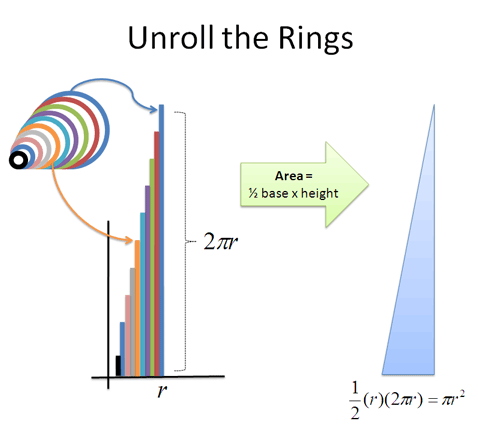 Calculus explains X-Ray and Time-Lapse vision exist, they are opposites (splitting apart, gluing together) and any pattern can be analyzed. Arithmetic gives us add/subtract, multiply/divide, exponents/roots. "Calculus arithmetic" also has X-Ray (split apart) and Time-Lapse (glue together). |
| So what can I do with Calculus? | See patterns at a deeper level and make predictions we couldn't before. |
| Example: Analyzing a Circle | Build with rings, slices, or boards; each has tradeoffs. |
| Ring-by-ring View | Organic growth, increasing effort.  |
| Slice-by-slice View | Assembly-line, predictable progress  |
| Board-by-board View | Robotic, never retracing  |
| 3d versions | 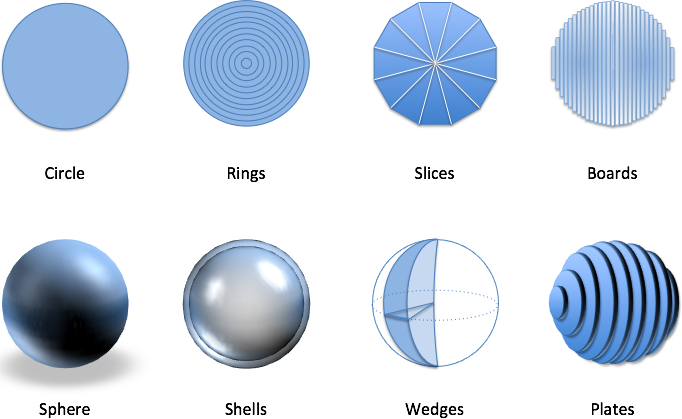 |
| How to think with calculus | For your situation:
|
3. Describing Calculus (English → Math)
| Concept | Key Analogy / Takeaway |
|---|---|
| Organize Our Descriptions | Direction of slices in orange. Arrange slices side-by-side for easy comparison. 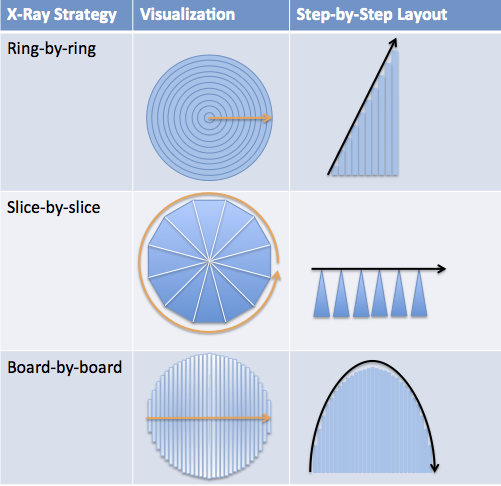 |
| Term: Derivative | Creating a pattern of step-by-step slices along a path (i.e., rings, slices, boards, etc.). |
| Term: Integral | Accumulating slices into a shape (what is being built up as we go?) |
| Notation Details | Derivatives only require the direction we move when taking slices: $$$\frac{d}{dr}$$$ means slice along r's direction. Integrals require direction we glue together ($$$dr$$$), where we start/stop ($$$0$$$ to $$$r$$$), and the size of each slice ($$$2 \pi r \ dr$$$:  |
| Computer Calculation | Wolfram Alpha can compute integrals/derivatives when asked: 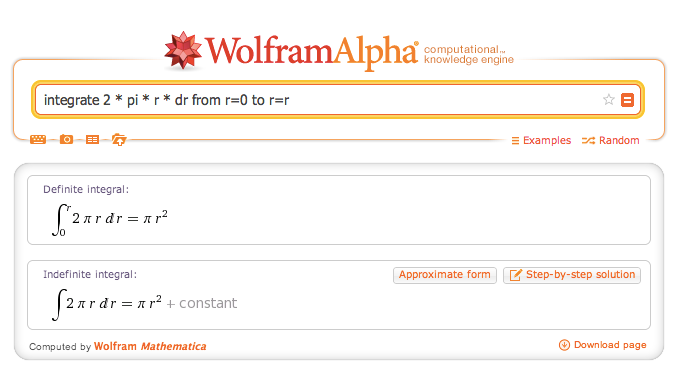 |
| Note about Abstraction | Begin thinking about general patterns (x, x^2), not just specific shapes (a line, a square). |
| Lines | Lines ($$$f(x) = ax$$$) change by a steady $$$a$$$ each time, like building a fence. |
| Squares | Squares ($$$f(x) = x^2$$$) change by $$$2x + 1$$$: 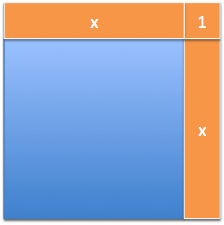 |
4. Learning To Measure Change
| Concept | Key Analogy / Takeaway |
|---|---|
| Infinite processes can point to a result | Analogy: fly going back and forth. Count its paths ("infinite"), or just the time traveled. Pixellated letters point to the smooth whole. |
| Analogy: Measuring Heart Rate | Get on treadmill, hook up wires, run. The measurement is your heart rate under stress. Must then remove impact of wires. |
| The formal derivative | Find change, then assume change had zero effect: 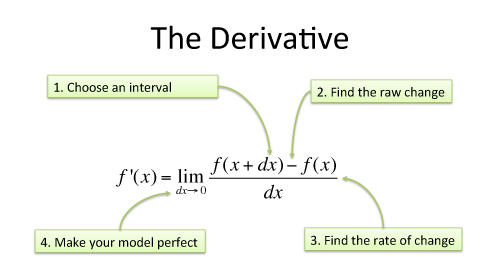 |
| Example | $$$2x + dx \overset{dx \ = \ 0} \Longrightarrow 2x$$$, so $$$\frac{d}{dx} x^2 = 2x$$$, with errors artifacts removed |
| Fundamental Theorem of Calculus | The shortcut to computing the integral is finding a pattern that made the changes we're seeing. |
| Integrals are Reverse Engineered | See patterns of steps and ask: what shape could have made this?  L-shapes come from changing squares. Instead of adding (5 + 7 + 9 = 21), take the final square and subtract the starting one (25 - 4 = 21). |
5. The Core Rules Of Calculus
| Concept | Key Analogy / Takeaway |
|---|---|
| Multiplication Rule $$(f \cdot g)' = f \cdot dg + g \cdot df$$ |
Grow a garden on two sides; ignore the corner.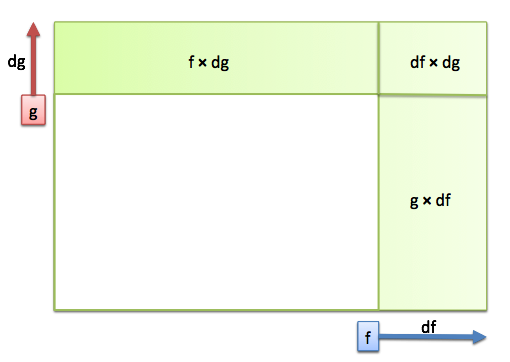 |
| Simple Division $$ \left( \frac{1}{x} \right)' = -\frac{1}{x^2}$$ |
Splitting cake, new person enters (from halves to thirds). |
| Insight: Each perspective makes a contribution | With 3 variables you have 3 perspectives to add:  Derivative of $$$x \cdot x \cdot x$$$ has three identical perspectives ($$$x^2 + x^2 + x^2$$$) or $$$3 x^2$$$. |
| Power Rule $$\frac{d}{dx} x^n = n x^{n-1} $$ |
Each side has a point of view; I change, others are the same.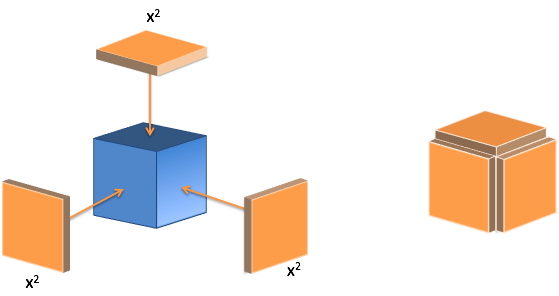 |
| Rule Summary | 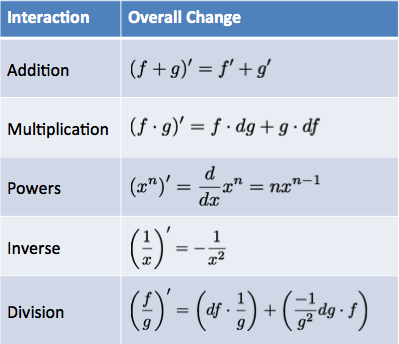 |
6. Finding Archimedes' Formulas
| Concept | Key Analogy / Takeaway |
|---|---|
| Find the circle/sphere formulas | X-Ray and Time-Lapse a single ring into the other shapes.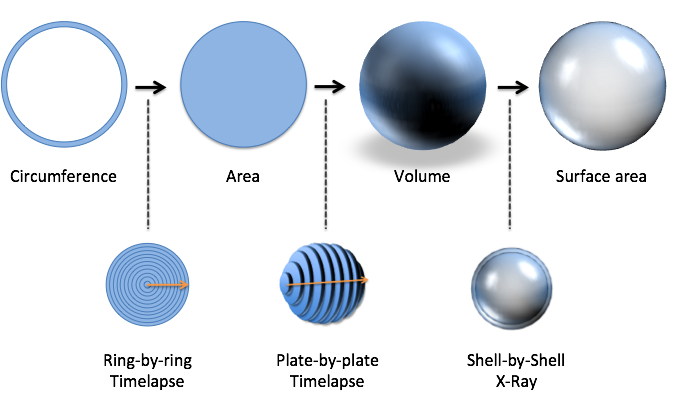 |
| Circumference to Area |   |
| Area to Volume | 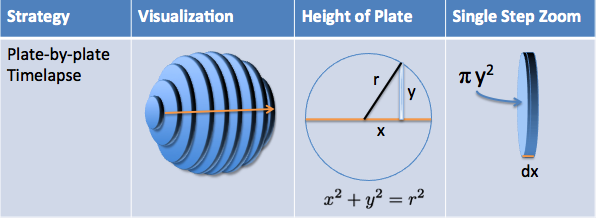  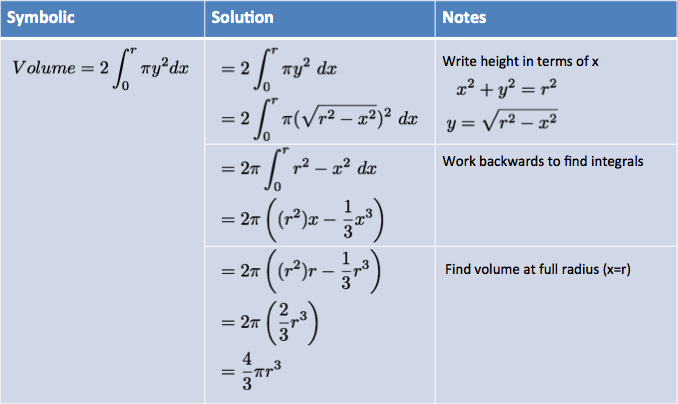 |
| Volume to Surface Area | 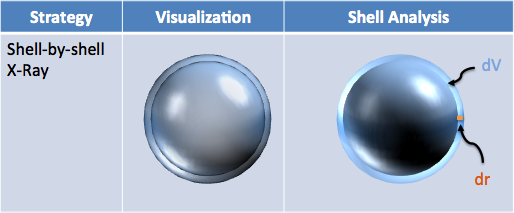 $$\text{area of shell} = \frac{\text{volume of shell}}{\text{depth of shell}} = \frac{dV}{dr} $$ $$\frac{d}{dr} V = \frac{d}{dr} \frac{4}{3} \pi r^3 = \frac{4}{3} \pi \frac{d}{dr} r^3 = \frac{4}{3} \pi (3 r^2) = 4 \pi r^2 $$ |
| Historical Note | Archimedes had a calculus mindset: he re-arranged discs, cylinders, cones, etc. to make "easy to measure" slices. The techniques you already know would make him tear up. |